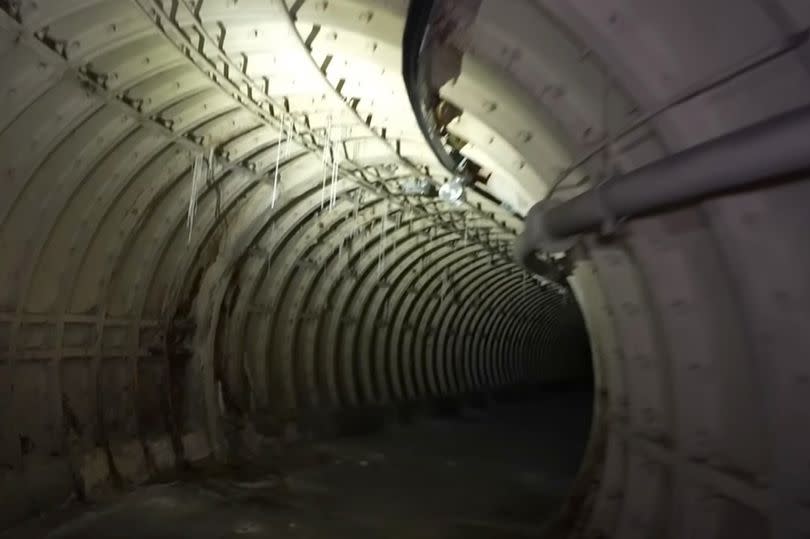Inside the hidden tunnels under No.10 where PM would survive a nuclear apocalypse

This week, the nation's attention has been focused on Downing Street as the general election saw Keir Starmer's Labour thrash the Tories.
However, even the most politically savvy may not be aware of the network of mysterious bunkers beneath the Prime Minister's residence. Urban explorer Dan, from Exploring With Fighters, dared to delve into this hidden world, offering a rare glimpse into tunnels that few top politicians have seen.
The risky operation saw Dan's guide for the adventure, Matthew Williams, scale a building before abseiling down the other side to access the entrance. This allowed them to enter the tunnels located some 200 feet below London's streets, reports the Mirror.
"This is a lot different than the other deep shelters we've been to," Dan explained. "Normally when you enter the the area you've got a spiral staircase going all the way down 200 plus foot on underground and a central elevator in between and you have intertwining staircases... but this is so different, you've got a big elevator here."
READ MORE: For breaking news in your area direct to your inbox every day, sign up to our free newsletter
The entrance to the labyrinth of tunnels is protected by heavy steel doors, and the sound of underground trains can be heard overhead as the team navigated through steel-reinforced tunnels, occasionally spotting "stalactites" of limescale. The doors even have rubber seals to prevent radioactive fallout particles from seeping through in the event of a nuclear attack.
The bunker, designed to withstand the worst of wartime scenarios, showed signs of vulnerability as water had begun to seep through, indicating it wasn't as impregnable as intended. Dan remarked, "It would be great as an air-raid shelter," but pointed out its inadequacy for nuclear fallout protection, saying, "but it would be terrible as a nuclear fallout shelter you would be exposed to that radiation pretty quickly."
Among the bunker's features was an old landline telephone exchange for internal communication, a kitchen, and even a bar. Notably, there was a bowling alley, seemingly prepared for post-apocalyptic recreation.
Dan stumbled upon an antiquated phone booth during his exploration, expressing doubt that many of his younger audience members would recognize it.
Back when the bunker was operational, No. 10 staff would cycle through its tunnels for transportation.
With the diminished threat of nuclear war, there are now plans to repurpose the Cold War relic into an underground hotel and nightclub. One of the exits, no longer in use, opens onto an underground station platform. However, the explorers opted to leave through a small two-person elevator that took them up to street level.
Dan shared his experiences exploring abandoned underground sites across the UK for years, uncovering a trove of secret bases hidden beneath the surface. Though the 1950s bunker he investigated probably won't be reinstated as a military facility anytime soon, this doesn't imply that the Ministry of Defence (MoD) has completely shuffled off the idea of subterranean London. Lying beneath the main MoD edifice in Whitehall is Pindar, also known as the Defence Crisis Management Centre.
This centre, costing an enormous £126.3million, became fully operational in 1992 and boasts an impressive resilience against biological or chemical attacks, flooding, EMP strikes, withstanding all but "all but a direct hit or very near miss" from nuclear weapons.
For breaking news in your area direct to your inbox every day, go here to sign up to our free newsletter

 Yahoo News
Yahoo News 
